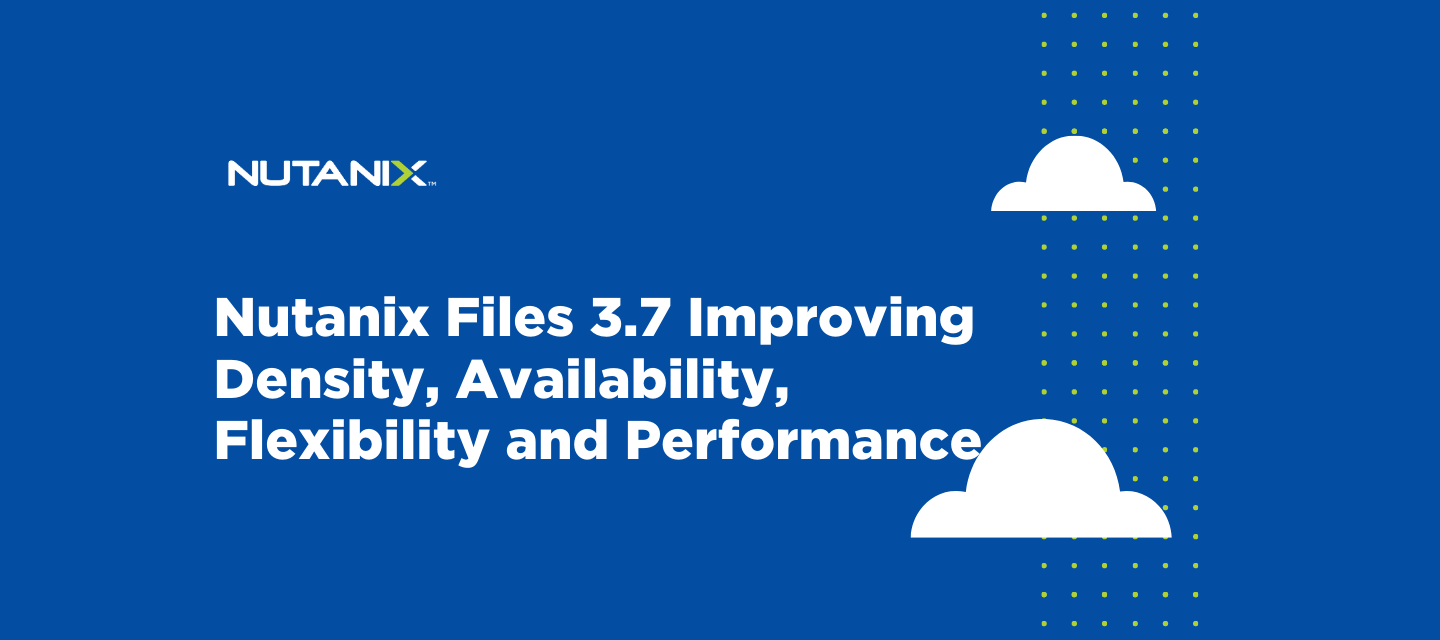With thousands of customer deployments, Nutanix Files has quickly become integral for enabling enterprise class scale-out file server use cases. Key use cases include Windows and Linux file shares, application data repositories, file archives, medical imaging and video surveillance stores, to name a few. Working closely with our partners, Nutanix Files has recently been validated with key industry leaders in the areas of Healthcare and Smart Video including:
-
Change Healthcare PACS
-
Nutanix Files is validated as a PACS/VNA data storage solution by Change, the world’s largest healthcare software provider, for Change’s Healthcare Enterprise Imaging Portfolio.
-
-
IBM Watson Health PACS
-
Nutanix Files is validated for short term and long term archive data stores for Merge PACS, Merge Cardio, Merge Hemo and IBM Watson iConnect Enterprise Archive.
-
-
Milestone Surveillance
-
Nutanix Files is validated with Milestone XProtect to provide an intelligent and powerful solution capable of recording, monitoring and retaining thousands of camera feeds simultaneously.
-
With each release Nutanix Files has added functionality to enhance and expand support for these and other use cases. Nutanix Files 3.7 is no exception, with improvements to storage density, high availability, deployment flexibility, and core performance.
For storage density, Files now supports Nutanix nodes with up to 240TB of HDD storage, so you can store more data in a smaller footprint, saving on CAPEX, power, cooling, and rack space. 240TB node support is in conjunction with our hardware partners including the HPE-DX and Dell-XC offerings.
Files also supports larger share sizes with the 3.7 release. The volume groups that underpin the standard and distributed shares of Nutanix Files can now scale up to double the size, 280TB. Distributed shares load balance across a collection of volume groups, leading to individual share sizes supporting petabytes of data.
For availability, Nutanix Files now supports SMB 3.0 transparent failover, also called continuous availability (CA) shares. CA shares allow for durable and persistent file handles to minimize the impact of any storage disruption during failure or upgrade events. CA shares are intended for applications like Citrix App Layering and Fslogix that demand non-disruptive operations. SMB 3.0 transparent failover is a Technical Preview feature with the Files 3.7 release.
Nutanix Files 3.7 also offers greater flexibility by allowing you to create a customized namespace. Namespace customization comes from the new ability to mount shares as subdirectories within existing shares.
In the diagram you can see how the “Distributed1” share is mounted as “Folder2” in the “Standard1” share. So the path \\FS1\Standard1\Folder2\TLD1 is the same as \\FS1\Distributed1\TLD1.
Mounting shares within an existing folder structure brings several advantages. For example, it allows you to create a distributed share architecture at any level of the folder hierarchy. Instead of having to distribute directories at the root of a distributed share, you can mount a distributed share at any level of the namespace to match application requirements. You also get the benefit of folder-level quotas, by leveraging the quota and share size limit applied to the underlying share. The same is true for self-service restore, giving you folder-level control based on the share setting.
For performance, you can now customize the maximum storage block size used for a given share. Nutanix Files leverages a variable block size based on the size of the file. A 1KB file will allocate 1KB on the filesystem. This holds true up to the maximum block size, which by default is 64KB. Files 3.7 introduces the ability to change the block size based on either a more random or more sequential I/O profile. For random workloads, you can specify a maximum block size of 16KB, and for sequential workloads you can specify a block size up to 1MB. Testing has shown sequential workload performance improvements up to 25 percent, and random workload benefits up to 45 percent.
Nutanix engineering continues to innovate and expand the core functionality of Nutanix Files to meet the needs of our customers. For the full details of the Files 3.7 release check out the release notes at https://portal.nutanix.com/. If you’re new to Nutanix Files or even to Nutanix and would like to give it a try, you can Test Drive Nutanix HCI and products like Nutanix Files at https://www.nutanix.com/test-drive-hyperconverged-infrastructure.
© 2020 Nutanix, Inc. All rights reserved. Nutanix, the Nutanix logo and all Nutanix product and service names mentioned herein are registered trademarks or trademarks of Nutanix, Inc. in the United States and other countries. All other brand names mentioned herein are for identification purposes only and may be the trademarks of their respective holder(s). This post may contain links to external websites that are not part of Nutanix.com. Nutanix does not control these sites and disclaims all responsibility for the content or accuracy of any external site. Our decision to link to an external site should not be considered an endorsement of any content on such a site. Certain information contained in this post may relate to or be based on studies, publications, surveys and other data obtained from third-party sources and our own internal estimates and research. While we believe these third-party studies, publications, surveys and other data are reliable as of the date hereof, they have not independently verified, and we make no representation as to the adequacy, fairness, accuracy, or completeness of any information obtained from third-party sources.
This post may contain express and implied forward-looking statements, which are not historical facts and are instead based on our current expectations, estimates and beliefs. The accuracy of such statements involves risks and uncertainties and depends upon future events, including those that may be beyond our control, and actual results may differ materially and adversely from those anticipated or implied by such statements. Any forward-looking statements included herein speak only as of the date hereof and, except as required by law, we assume no obligation to update or otherwise revise any of such forward-looking statements to reflect subsequent events or circumstances.



